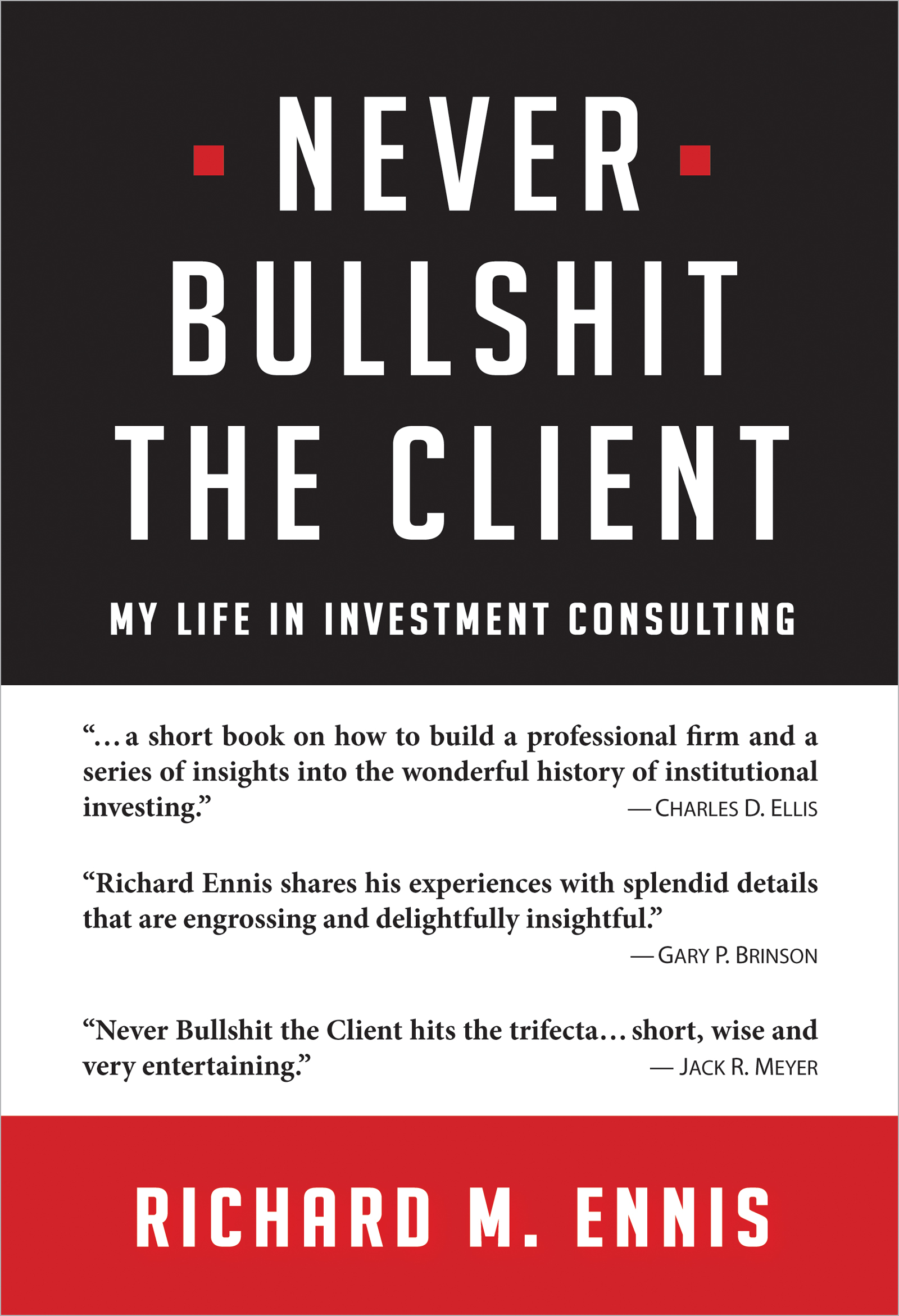A Bad Year for Institutional Investors
Benchmarking. For a Journal of Portfolio Management article earlier this year, I created two comprehensive institutional investor composites: one for large public pension funds and the other for large educational endowments. I evaluated their return histories over the 10 years ended June 30, 2018. To do so, I began by devising performance benchmarks for each of the composites. A properly-constructed performance benchmark for an institutional investment portfolio should be passively investable. “Investable” means that there is nothing hypothetical about the benchmark; anyone can achieve its rate of return. “Passively” means the benchmark should be free of active investment-decision-making; that, after all, is what the benchmark is helping to evaluate. Also, the benchmark should accord with the risk characteristics of the subject portfolio as well or better than alternative benchmark candidates; in other words, the benchmark should fit the investing being done. For diversified investors, a combination of stock and bond indexes makes for a good benchmark.
The benchmarking procedure resulted in benchmarks for the two composites that are remarkably similar to one another, as shown in the table below. The endowment composite has 72% in common stocks and 28% in investment-grade bonds.[1] The common stock figure for the pension funds is just one percentage point less than that for endowments. The benchmarks have a very high degree of correlation with the composite return series, indicating their goodness of fit.
Comparison and Evaluation of Composite Benchmarks
|
Investor Type |
Russell 3000 Stocks |
MSCI ACWI ex-U.S. Stocks |
Bloomberg Barclays US Aggregate Bonds |
R2 |
Standard Error of Regression |
|
Public |
54% |
17% |
29% |
.991 |
1.1% |
|
Endowment |
56 |
16 |
28 |
.984 |
1.4 |
The Cost Effect. The two composites underperformed their benchmarks over the 10-year study period ended June 30, 2018. The public funds underperformed by an annualized -1.0% per year. The figure for the endowments was -1.6% per year. I independently estimated the cost of investing for the two fund types based on their differing degrees of commitment to pricey alternative investments, for which I estimated a bundled cost of 2.5% of asset value. (The endowments had nearly double the pubic funds’ average percentage allocation to alts.) The cost estimates were nearly identical to the respective margins of underperformance. I have come to think of this margin of shortfall as the cost effect. By this I mean that, owing to the composites’ extensive diversification — including literally thousands of managed portfolios each composite — it is reasonable to attribute the performance shortfall to the cost incurred by the funds in the course of their investing activities. I recently updated my estimate of the cost effect. Based on 12 years of data, my current estimate of the cost effect for public pension funds in the aggregate is 1.2%; it is 1.7% for large endowment funds, which hold about twice as much in more costly alternative investments.
Fiscal Year 2020 Performance. The recent performance of the two types of investor surprised me. Large public pension funds had a median gross-of-fee return of 2.4% according to Wilshire Associates TUCS report for the latest fiscal year. The figure for large endowments and foundations was 2.6[2]. (I use these reported medians as proxies for my composites, for which data are not yet available. The reported median returns, however, are biased upward inasmuch as they are reported gross of some investment expenses.) The reported figures are substantially less than the benchmark returns for the two fund types, which both happen to be ~5.3% for the fiscal year. The shortfall for public pension funds is 2.8% and for endowments it is 2.7%, figures much larger than the respective cost effects of 1.2% and 1.7%. In the table below, I first subtract my estimate of the composites’ cost effect from that of the benchmark to arrive at the predicted return for the two composites. As stated, the predicted values are well in excess of the actual return figures. I then subtract predicted return from actual to arrive at the magnitude of the differences, which I refer to as the active return. In other words, after taking account of the cost effect, the public funds underperformed by an additional 1.6% and endowments by an additional 1.0%. These are relatively large deviations by historical standards.
Institutional Performance for Fiscal Year 2020
|
|
Public |
Endowment |
|
Bencmark Return |
5.2% |
5.3% |
|
Minus: Cost Effect |
-1.2 |
-1.7 |
|
Predicted Composite Return |
4.0 |
3.6 |
|
|
|
|
|
Actual Median Return |
2.4 |
2.6 |
|
|
|
|
|
Active Return (Actual minus Predicted) |
-1.6 |
-1.0 |
Sluggish Alts Valuations? My guess is that the large return shortfall in fiscal year 2020 is in part, at least, the result of some alternative asset valuations failing to keep up with the pubic markets’ sharp rebound in the second quarter of 2020. Private equity and real estate, in particular, are known for their infrequent marks to market. If that is the case, perhaps we should affix an asterisk to the 2020 results, signifying an incomplete report of sorts.
On the other hand, what if there is no snap-back in valuations? Then, what we have seen is what we get. And 2020 will remain in the record books as a very bad year — without asterisk or other consolation. In either case, fiscal year 2020 serves as a reminder that investors never know for sure what their private market investments are worth. This can hardly be interpreted as a plus for illiquid alternatives.
[1] The return for large endowments & foundations was estimated from the exhibit on Page 3 of the Wilshire TUCS report.
[2] We added an additional constraint that the non-US equity allocation (as represented by MSCI ACWI ex-U.S. Index) not be less than 16-17% of total assets. For additional information, please see footnote 5 of the Journal of Portfolio Management article.

